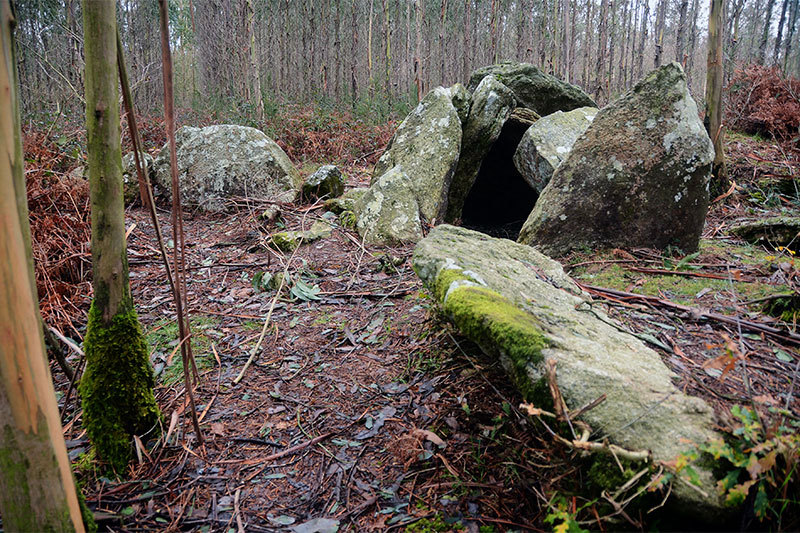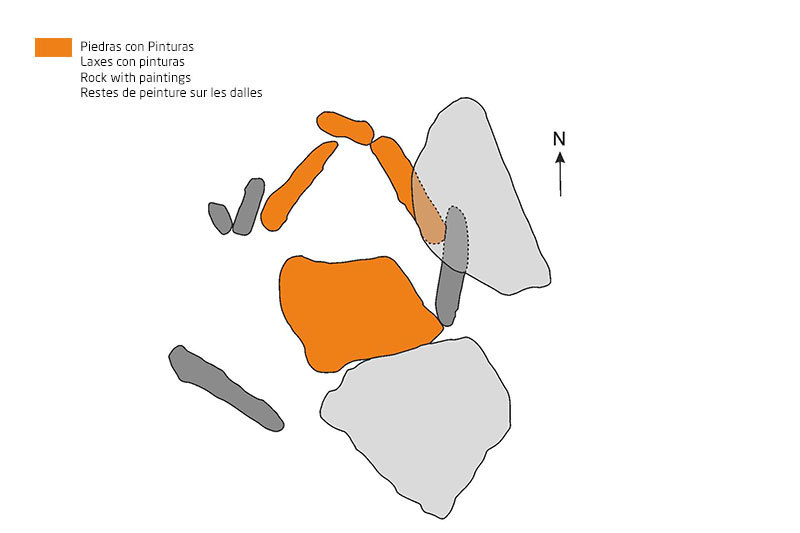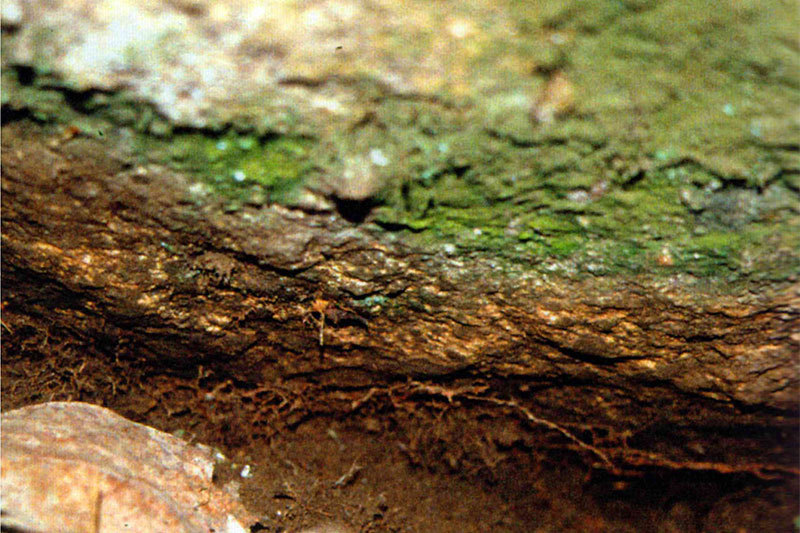This dolmen, also know as the Anta de Serramo, is a large megalith which today finds itself quite altered. No remains of the mámoa can be found and its stones, or orthostates, are quite scattered. Nevertheless, the majority of the stones of the chamber are in their original location, which reveals the existence of a chamber of 7 or 8 slabs and a passage of which only one stone appears to be conserved. Most noteworthy perhaps is that at the end of the 90s vestiges of red and black paint on 4 of its stones were discovered. None of them conserved pigments in the areas exposed to open air. The scarce discovered remains were located in the area in contact with the ground, which leads us to believe that future archeological excavations might bring to light areas with well-conserved paint.
One of the samples of analyzed pigments offered one of oldest datings of any Galician megalith—between 5300 and 4700 BCE. Archeologists believe that this may be due to a deviation stemming from problems while collecting the sample or perhaps from possible contamination, which would give a completely incorrect date.
Another suggestive hypothesis which has recently been forwarded is that the paint had been applied to a prior monument, such as a menhir or stela, and was much later reused in the construction of the dolmen. This would explain, at least in part, the presence of such an ancient date.


